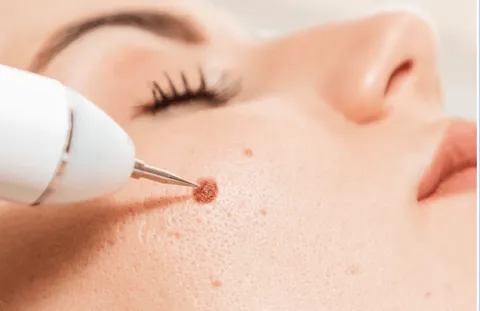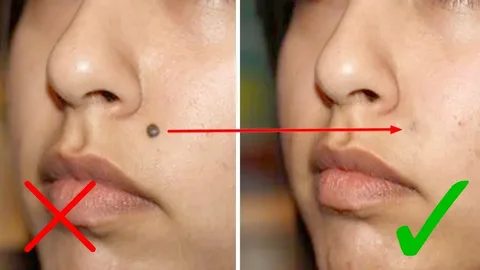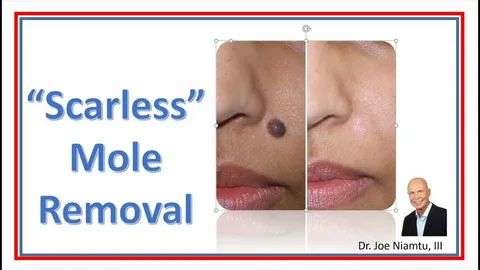Mole Removal Cost with Insurance: Everything You Need to Know
Moles are common skin growths that most people have at some point in their lives. While many moles are harmless, some may require removal for medical or cosmetic reasons. If you’re considering mole removal, understanding the costs involved, especially with insurance, is crucial. This article will cover everything you need to know about mole removal costs, insurance coverage, and more.

What is Mole Removal?
Mole removal is a medical procedure to eliminate moles from the skin. Moles can be removed for various reasons, including:
- Medical Reasons: If a mole is suspected to be cancerous or pre-cancerous, removal is often necessary.
- Cosmetic Reasons: Some people choose to remove moles for aesthetic purposes.
- Comfort: Moles that are in areas prone to irritation or friction may be removed to prevent discomfort.
Types of Mole Removal Procedures
There are several methods for mole removal, each with its own cost implications:
- Excision with Stitches: The mole is cut out, and the wound is closed with stitches.
- Shave Excision: The mole is shaved off the skin’s surface.
- Laser Removal: A laser is used to remove the mole.
- Cryotherapy: The mole is frozen off using liquid nitrogen.
Each method has its pros and cons, and the choice of procedure can affect the overall cost.
Cost of Mole Removal
The cost of mole removal can vary widely based on several factors:
- Type of Procedure: Surgical excision tends to be more expensive than shave excision or cryotherapy.
- Location: The cost can vary depending on where you live and the healthcare provider you choose.
- Size and Number of Moles: Larger moles or multiple moles may increase the cost.
- Insurance Coverage: Whether or not your insurance covers the procedure can significantly impact the out-of-pocket cost.
On average, mole removal can cost between $150 to $500 per mole1. However, for cosmetic mole removal without insurance, the cost can exceed $1,0001.

Insurance Coverage for Mole Removal
Insurance coverage for mole removal depends on the reason for the procedure:
- Medical Necessity: If the mole is being removed due to medical concerns, such as potential cancer, insurance is more likely to cover the cost1.
- Cosmetic Reasons: If the removal is purely for cosmetic reasons, insurance typically does not cover the cost1.
It’s essential to check with your insurance provider to understand what is covered under your plan. Some plans may require a referral from a primary care physician or a dermatologist’s evaluation before approving coverage.
Factors Affecting Insurance Coverage
Several factors can influence whether your insurance will cover mole removal:
- Medical Documentation: Providing thorough medical documentation that justifies the need for removal can help in getting insurance approval.
- Insurance Plan: Different insurance plans have varying levels of coverage and requirements.
- Deductibles and Copays: Even if the procedure is covered, you may still be responsible for deductibles and copays.
How to Get Insurance to Cover Mole Removal
To increase the chances of getting your mole removal covered by insurance, follow these steps:
- Consult a Dermatologist: A dermatologist can evaluate the mole and provide medical documentation supporting the need for removal.
- Get a Referral: Some insurance plans require a referral from a primary care physician.
- Submit Documentation: Ensure all necessary medical documentation is submitted to your insurance provider.
- Follow Up: Stay in touch with your insurance provider to track the status of your claim.
Out-of-Pocket Costs
If your insurance does not cover mole removal, you will need to pay out-of-pocket. Here are some tips to manage these costs:
- Shop Around: Prices can vary between providers, so it’s worth getting quotes from multiple dermatologists.
- Payment Plans: Some clinics offer payment plans to help spread out the cost.
- Discounts: Ask if there are any discounts available for paying upfront or for multiple procedures.
Risks and Complications
Like any medical procedure, mole removal carries some risks and potential complications:
- Infection: There’s a risk of infection at the removal site.
- Scarring: Some degree of scarring is inevitable, but it can be minimized with proper care.
- Recurrence: In rare cases, the mole may grow back.
Aftercare and Recovery
Proper aftercare is essential to ensure a smooth recovery and minimize complications:
- Keep the Area Clean: Follow your doctor’s instructions for cleaning the wound.
- Avoid Sun Exposure: Protect the area from sun exposure to prevent scarring.
- Monitor for Signs of Infection: Watch for redness, swelling, or discharge, and contact your doctor if you notice any of these signs.

Conclusion
Mole removal can be a straightforward procedure, but understanding the costs and insurance coverage is crucial. Whether you’re removing a mole for medical or cosmetic reasons, being informed can help you navigate the process more smoothly. Always consult with a dermatologist to determine the best course of action for your specific situation.
For more detailed information on mole removal procedures and costs, you can visit Bupa UK or Nuffield Health.
If you have any further questions or need assistance, feel free to reach out to your healthcare provider. And remember, while mole removal is generally safe, it’s always best to consult with a professional to ensure the best outcome for your health and well-being.
For a comprehensive look at various insurance options, check out these guides: Amtex Insurance, Amshield Insurance, American Economy Insurance Company, American Alternative Insurance Corporation, Amana Insurance, Massage Coverage by Blue Cross Blue Shield, Lessors Risk Only Insurance, Licensed and Insured, Solar vs Insurance, Alpa Insurance, Manufactured Home Insurance in Texas, Viking Insurance Company of Wisconsin, United Home Insurance, Strategic Insurance Quoting, and American Alternative Insurance Corporation (Second Guide).
Leave a Reply